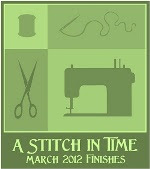As a longarm quilter for hire, I see lots of quilts and sometimes there are border issues. I have often shared my easy method for attaching borders, so here’s a quick demo outlining my method for you. I’m a very visual person, and this method always makes sense to me. This is not an original idea, and I don’t remember where I first saw this!
This technique is for “I” borders, the vertical borders are added first, followed by the top and bottom horizontal. However, this method works for “H” borders, too, where the top and bottom horizontal is sewn first, followed by the vertical sides.
Step 1 – Lay your quilt center on a flat surface, for me it’s usually the floor, smoothing without stretching. Lay 2 lengths of prepared borders across the quilt vertical, keeping the 2 layers together.
note: Your quilt should lay flat. If it doesn’t, fix it before you attach the borders!
Step 2 – Slide a cutting mat under the fabric and cut slightly off the edge of the quilt (do not cut the quilt!) using the ruler to make a right angle cut of the border. Carefully slide out the mat and repeat on the other side of the quilt.
Step 3 – Pin border to the vertical sides of the quilt, easing if necessary. Sew and press borders.
Step 4 – Lay the quilt on a flat surface, smoothing without stretching. Lay the prepared border across the horizontal middle of the quilt top and repeat Step 2, cutting the border to the width of the quilt top. Again, do not cut the quilt when trimming the border, trim slightly off the edge.
Repeat Step 3 – pin and sew borders to top and bottom horizontals and press.
All done!
This works for multiple borders, too. Just repeat all the steps.
I also use this method for borders with cornerstones. For that I cut the vertical and horizontal lengths in the first step, adding the cornerstones to the horizontal lengths, pinning and sewing after step 3.
I hope that makes sense! Let me know if it works for you.
Thanks for looking and just keep stitchin’ !
Linda











You must be logged in to post a comment.